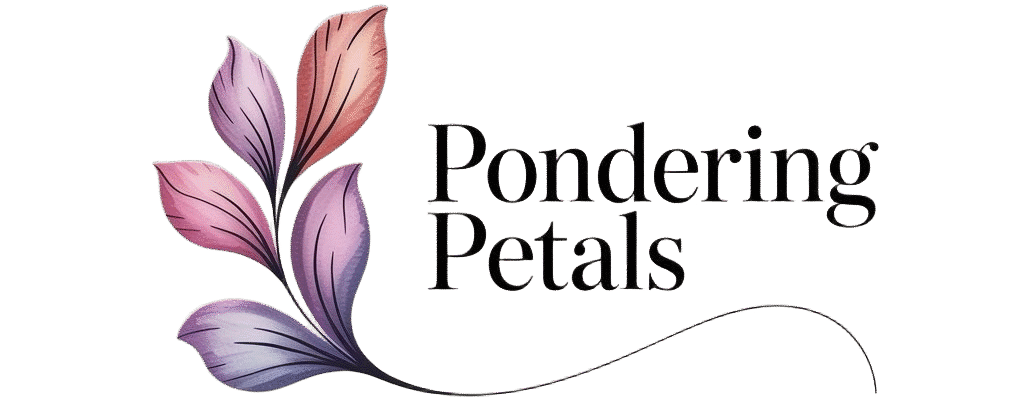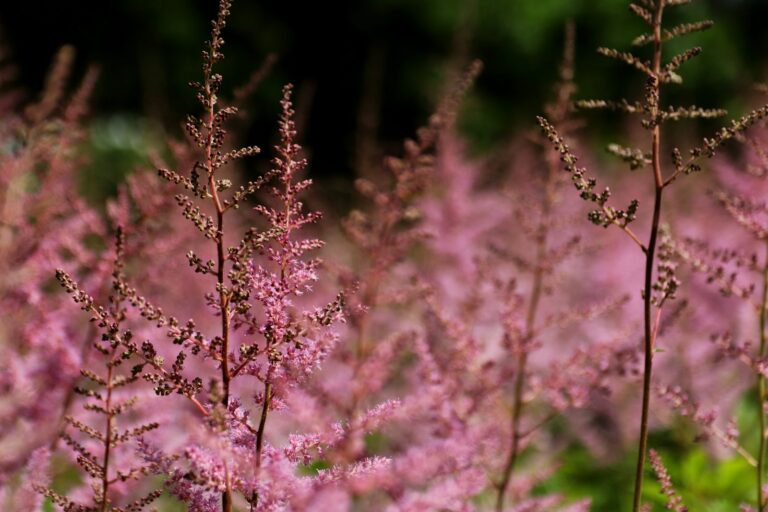Astilbe Problems: Troubleshooting Common Growing Issues
Your astilbe leaves curl inward and develop crispy brown edges despite regular watering. The culprit? Leaf scorch from high temperatures, dry soil, and windy conditions triggers reddish-brown margins that spread across foliage[1]. Understanding the specific cause behind each symptom transforms struggling plants into thriving specimens.
Understanding Astilbe Growing Problems
Astilbe is one of the most reliable shade perennials — but whether it grows or not depends upon specific growing conditions. Symptoms of environmental imbalance appear quickly. The majority of astilbe problems are related to:
- Moisture imbalances
- Improper light exposure
- Nutrient deficiencies
- Fungal diseases
Abandoning plants of this kind can result in irreversible damage if the issue is not recognised earlier.
Moisture-Related Issues
Dry soil is the biggest problem for astilbe. Plants need consistently moist conditions, after which the leaves curl, turn brown and die off[7]. It does so as astilbe roots cannot access sufficient moisture during hot weather. Under short stress, even drought causes leaf damage that lasts through the growing season.
Leaf Scorch
Leaf scorch occurs when reddish-brown edges appear, resembling burnt areas[1]. For example, this is due to three causes namely high temperature, dry soil, and windy weather[1]. It’s an even hotter afternoon sun that makes the situation worse, which means the plants can evaporate more rapidly than roots can compensate. Full sun areas experience more severely scorched plants than plants in partial shaded areas.
Leaf scorch from combined heat, drought, and wind creates the most preventable astilbe damage.
Overwatering and Root Rot
Overwatering causes just as much damage through root rot and yellowing foliage. Symptoms include:
- Wilting even though there is still water in the soil
- Mushy stems
- Yellowing leaves that eventually fall
At some point these will all eventually fall, and nothing remains—the roots are unable to draw oxygen from the air so the material deteriorates. Winter is when cold temperatures along with boggy soil kill them most.
Poor Flowering Problems
Stuck in bloom but failing is an indication of more general cultural failure. Poor nutrition is the leading cause of inadequate flowering[4]. These heavy feeders need frequent use of phosphorus-rich fertiliser to make plumes abundant.
Plants may look healthy and not develop even flower buds without proper nutrition.
Light Requirements
Shaded conditions will not let flowering take place when all else fails to meet specifications[3]. Astilbe does tolerate full shade, but plants require four to six hours of sunlight a day for the best blooms[7]. Deep shade sites yield lush foliage but not flowers. Fully sunny plants need more frequent irrigation and are often scorched with leaves.
Soil pH Impact
Flowering capacity is heavily affected by soil pH. Astilbe prefers slightly acidic (6.0 pH) soil[4]. When soil is too alkaline over a long time, the absorption of nutrients decreases and blooms decline. Aluminum sulfate or sulfur dust (acidifying amendments) are needed to normalize pH in soil that has become more alkaline[4].
Overcrowding Effects
To promote flowering, clumps age[4]. Overcrowding diminishes flowering after three to five years. Dense root systems battle for nutrients and water, producing smaller blooms and fewer flowering stems. There is a division benefit when plants reach at least three years[3]. Breaking up tightly packed clusters rejuvenates growth and a period of plentiful flowering.
Fungal Diseases
Powdery Mildew
Powdery mildew presents itself as white fungal growth at upper leaf surfaces[1]. This fungal disease thrives in humid conditions, spreading through wind-dispersed spores[6]. When untreated, infected leaves could turn yellow and die[5]. The disease eventually destroys plants when an infection spreads unfettered over the growing season.
Cercospora Leaf Spot
Cercospora leaf spot forms prominent dead spots on leaves[1]. Spots aggregate in wet weather inducing large dead areas within foliage[1]. This fungal infection starts at lower leaves[7]. The spores spread via splashing water when overhead irrigation affects foliage. Small purple or maroon areas grow until the leaves drop.
Prevention beats cure: water at plant bases, thin dense clumps, and apply fungicides at first symptoms.
Fusarium Wilt
Fusarium wilt appears as brown sunken regions on stems near the soil line[1]. This lethal illness attacks the plant’s vascular system, cutting off the flow of water to the upper portions of the plant. Some affected plants experience drought symptoms despite adequate soil moisture. On one side, leaves can wilt, turn yellow and twisted, brown and hang down, then start to dry up[6]. There is no treatment for this pathogen and infected plants must be removed to prevent transmission.
Foliar Nematode
Foliar nematode causes brown patches on leaves restricted in shape by leaf veins[1]. Typically the angular spots are seen first on lower leaves[2]. When the worms grow on plants, though, they are very wormlike and cause quite distinctive vein-bound spots in their tracks. Leaves which have been infected should be removed swiftly and dense clusters are thinned to promote air circulation[1].
Pest Problems
Black Vine Weevil
Black vine weevil larvae feed on roots and weaken the plant until it dies[6]. Adult weevils are one-half inch long and black and have a beaded thorax, and feed nocturnally by notching leaf margins[6]. Flightless females appear in May through July and feed for 3–4 weeks before laying eggs[6]. Grubs eat small roots and burrow into larger roots, causing heavy damage.
Asiatic Garden Beetles
Asiatic garden beetles appear in late June with the highest abundance in mid-July[6]. These reddish-brown beetles, which grow to about one-third inch long, have an iridescent sheen[6]. Adults eat leaves while larvae eat roots close to the earth. The beetles lay eggs in July requiring moisture to develop, and a single generation occurs each year[6].
Four-Lined Plant Bugs
Four-lined plant bugs feed on astilbe, leaving behind sunken brown spots on leaves[2]. Though these pests cause unwanted damage, they hardly ever kill plants. When damage reaches a tipping point, hand-picking or pesticides can also control populations.
Additional Diseases
| Disease | Symptoms | Treatment | Prognosis |
|---|---|---|---|
| Root-knot nematode | Galls on roots, stunted growth, yellowing foliage | Remove infected plants and surrounding soil | No cure – removal required |
| Tobacco ringspot virus | Yellowing throughout plant, healthy-looking roots | Remove and destroy infected plants | No cure – spreads to nearby plants |
| Transplant shock | Temporary browning, poor growth, reduced flowering | Proper watering, avoid root disturbance | Recovery by next season |
Root-knot nematode attaches galls to roots and prevents plant growth[1]. Aspects of sick plants exhibit yellowing foliage when infected, yet above-ground parts of them appear healthy. No cure is known for this condition, so removing infected plants together with the surrounding soil prevents their spread[1]. The pathogen continues to live in the soil for long periods after the plants’ removal.
Tobacco ringspot virus causes yellowing throughout plants even when roots appear healthy[1]. This viral infection requires complete plant removal since no cure is available. Destroying infected specimens means that the virus cannot spread to healthy, nearby plants.
Transplant shock is when a plant’s roots are dislodged, resulting in temporary browning or poor growth[2]. Transferring established plants, or changing soil around root zones damages fine feeder roots. This disturbance results in decreased plant vigor, browning of leaves and flowers, and reduced flowering. Plant recovery can be expected by the next growing season if well-treated.
Prevention and Solutions
The most preventable astilbe problems are those caused by low water.
Proper Watering
One inch of water in one deep watering once a week is delivered under arid conditions[3]. Frequent shallow irrigation means that soil becomes weak and the roots are far too shallow during dry periods to capture moisture. A two-inch layer of mulch maintains soil moisture and cool soil by preventing soil moisture escape[4]. For moisture retention, consider:
- Shredded bark
- Leaf mold
- Conifer needles
- Straw
Site Selection
Choosing the site properly avoids a significant number of such problems in advance. Plants flourish in partial shade (morning sun and light afternoon shade)[4]. The hot afternoon sun inhibits blossoming and increases leaf scorch. Well-draining soil that is rich in organic matter will promote the proper growth of the roots and prevent waterlogged soil that may cause root rot.
Fertilization Schedule
Fertilization regularly replenishes the heavy nutrient needs astilbe requires:
- Spring: Apply slow-release fertilizer with a 3-1-2 ratio[3]
- Mid-summer/early autumn: Repeat high-nitrogen fertilizer when buds set in plants[3]
- Ongoing: Regular fertilizer amendments with compost or well-rotted manure give ongoing nutrition
- Spring enhancement: Use phosphorus-rich fertilizers (4-6-4) to improve flowering[4]
Cultural Disease Prevention
Cultural practices also decrease moisture on foliage, a practice that is very important to fungal disease prevention:
- Water at the base of plants to prevent splashing onto leaves[1]
- Remove fallen leaves from around plants quickly
- Thin dense clumps for better air flow through the canopy
- Apply and use fungicides as soon as the symptoms appear on foliage
The use of compounds with thiophanate-methyl or sulfur as indicated in the label works very effectively[6].
Pest management starts by observing for early instances of infestation.
Pest Management
Check leaves for weevil feeding (notched leaf margins). Examine lower leaves for symptoms of foliar nematode. Introduce insect pathogenic nematodes as a first line of defense to black vine weevil larvae[6]. These beneficial organisms kill grubs well before they have developed and cause extensive root damage.
Winter Protection
Winter prep can protect plants from cold weather damage and disease:
- Once the first frost occurs, cut back foliage three to four inches above soil level[7]
- Apply a two-inch layer of winter mulch—compost, shredded leaves, or straw—after the ground freezes[4]
- This prevents root rot and deters rodents from nesting in warm mulch materials
- The winter mulch will keep temperatures in the root zone constant and prevent crown heaving due to freeze-thaw cycles
Conclusion
Astilbe problems do well with prompt intervention once they start to show symptoms. Problems with moisture resolution happen with adapted watering schedules and better drainage. When blooms fail, fertilizers, sunlight, and division are used. Infections of fungi also need immediate treatment and a change of cultural practices. Pest diseases react positively to appropriate intervention with control techniques. Knowing what’s causing each of these symptoms can direct us toward the optimal remedy to restore the plant’s health and produce years of reliable garden results.
Key Sources:
[1] Astilbe Diseases | Penn State Extension
[2] Astilbe Is Turning Brown | Gardening Know How
[3] My Astilbe Stopped Blooming | Gardening Know How
[4] What to Do if Your Astilbe Fails to Bloom | Gardener’s Path
[5] Astilbe Plant Diseases | Gardening Know How
[6] Astilbe | CT.gov
[7] Astilbe Care: Plumes Of Brilliant Flowers | Epic Gardening
Lily Morgan is a home gardener. She grows houseplants and designs small-space gardens. She shares what she learns from experience. Lily offers simple, practical tips for plant lovers. Her goal is to help others garden with confidence. She wants to help them grow, one leaf at a time.


